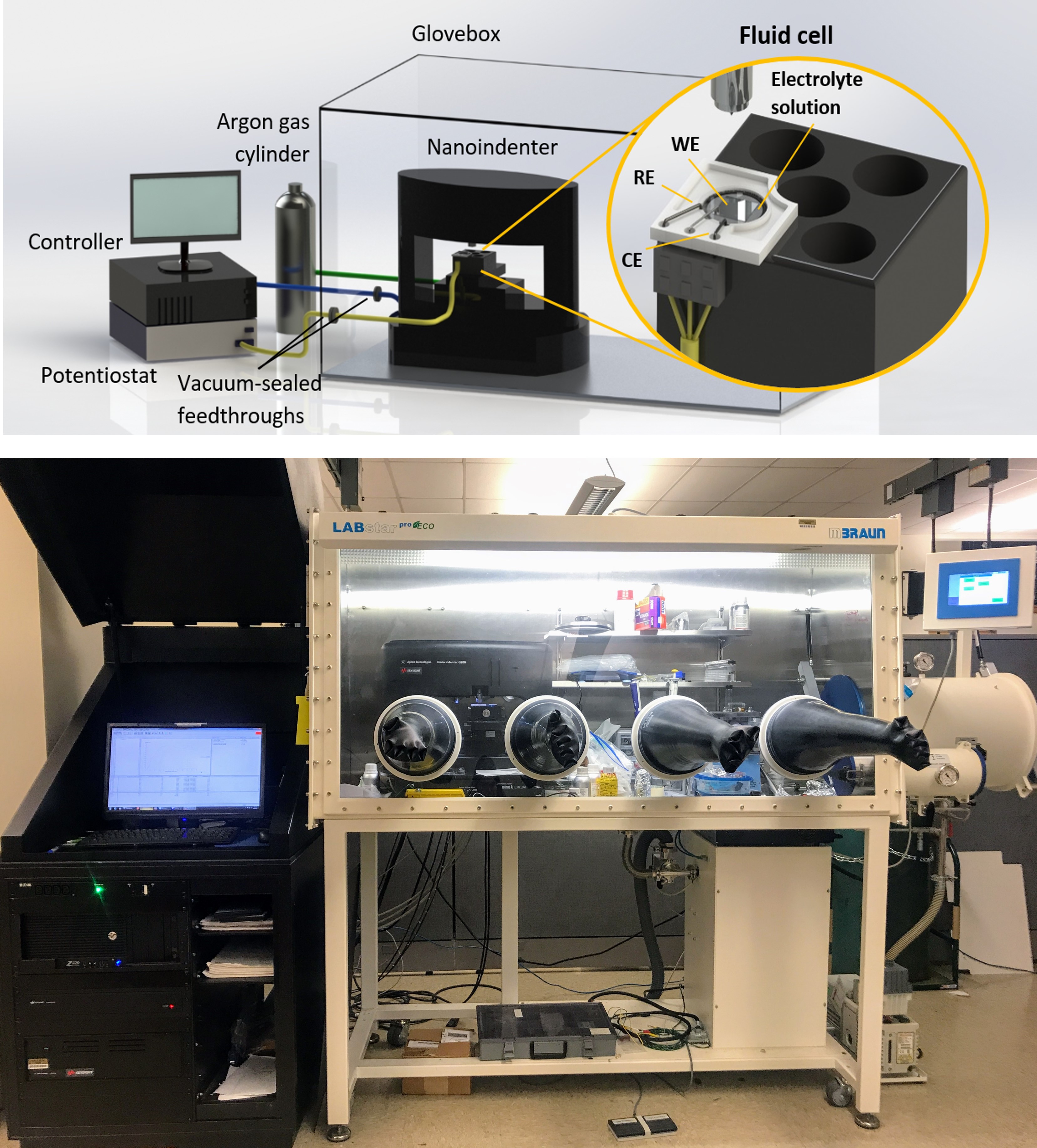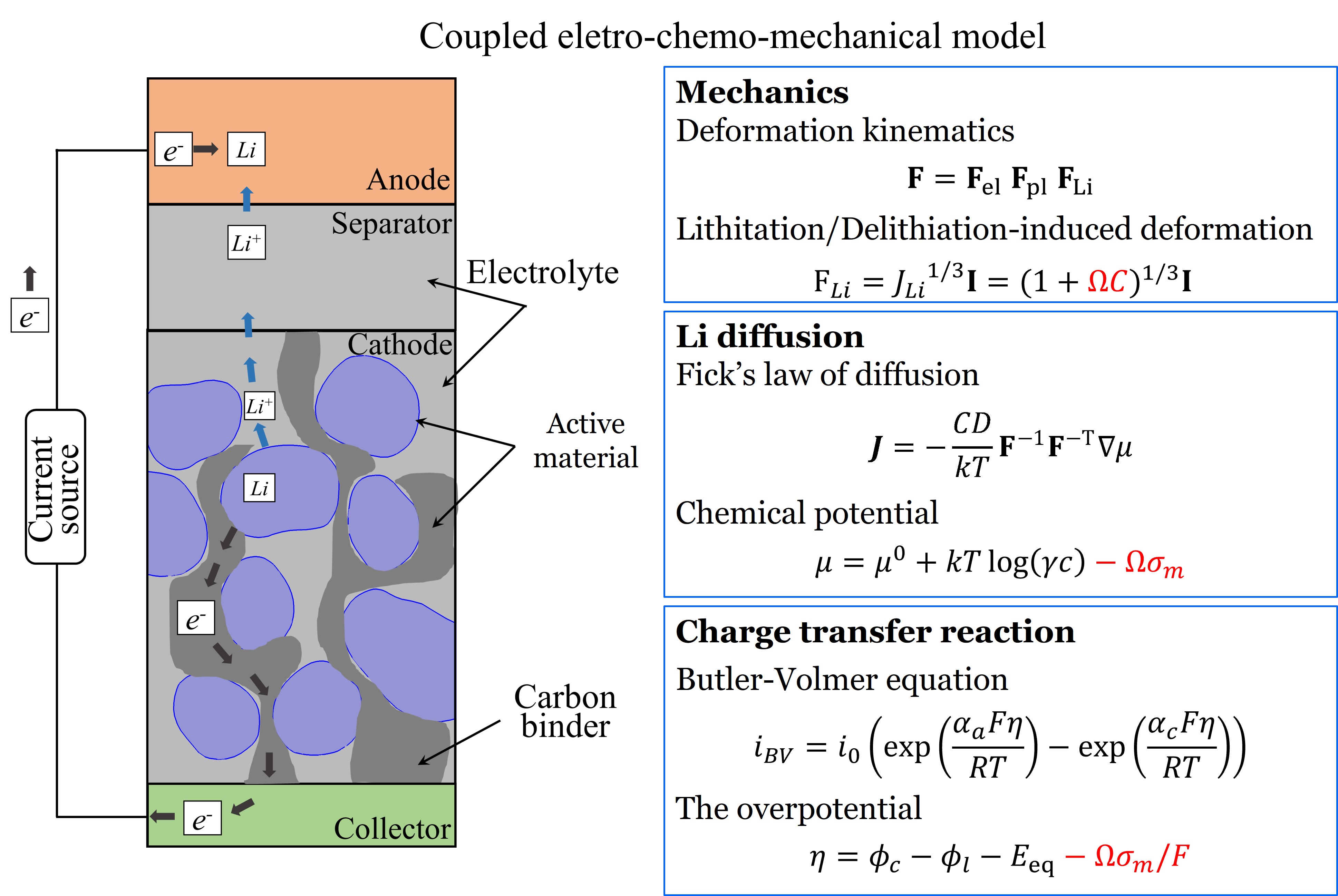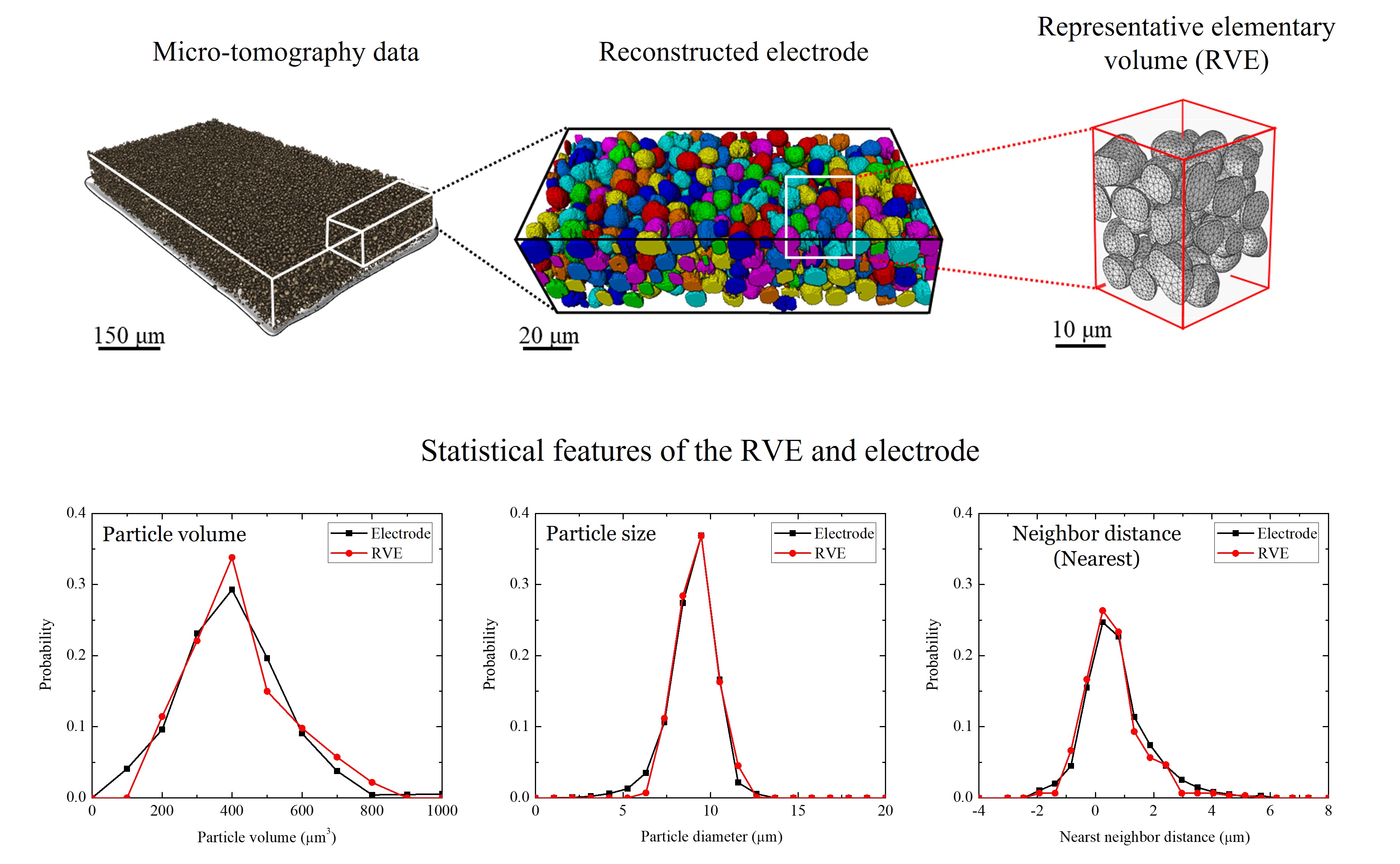科研方向 - 许 荣
Failure mechanism and regulation for all solid-state batteries

Compared with traditional Li-ion batteries using liquid electrolytes, all-solid-state Li metal batteries are more promising in increasing battery energy density, widening the operating temperature range, and improving safety. However, the solid-solid contact between the electrode material and the solid electrolyte in all-solid-state batteries will cause a series of mechanical failures at different scales and in different components, which seriously deteriorates the battery performance. In the past few years, we aim to
1. understand the underlying mechanism of the Li penetration into the solid-state electrolyte (SSE). We report an in-situ SEM methodology and a coupled electro–chemo–mechanical model to investigate the dynamic behaviors of isolated Li filaments in the SSE. We reveal that filament growth is strongly regulated by the competition between the electrochemical driving force and mechanical resistive force.
2. stabilize the morphology of the Li/SSE interface under relatively high current density and limited stack pressure. We report a novel 3D-micropatterned SSE (3D‐SSE) that can reduce the local current density and amplify the mechanical stress at the Li/3D‐SSE interface, which benefits the flux balance between Li stripping and creep at the interface and thus prevents interfacial degradation.
3. design all-solid-state batteries with improved electrochemical and mechanical stability. We propose a creep-type cathode using creepable Se and an all-in-one rigid ionic/electronic conducting Mo6Se8 framework. This cathode presents unique capabilities in improving interparticle contact and avoiding particle fracture, leading to its superior performance.
Ongoing projects:
-Failure mechanism of solid electrolytes in all-solid-state batteries;
-Mechanics-guide designs for Li batteries with improved chemo-mechanical stability;
Representative publications:
1. Chemomechanical Origins of the Dynamic Evolution of Isolated Li Filaments in Inorganic Solid-State Electrolytes
2. A morphologically stable Li/electrolyte interface for all-solid-state batteries enabled by 3D-micropatterned garnet
3. Creep-type all-solid-state cathode achieving long life
Nanomechanical characterization of advanced materials

Operando nanoindentation platform in Prof. Kejie Zhao’s lab at Purdue University

AFM nanoindentation platform in the SNF at Stanford University
The mechanical stability of many advanced materials, such as battery materials, is highly determined by their local mechanical properties. However, experimental quantification for these properties is usually challenging, partially because of their highly air-sensitive nature and partially because of their heterogeneity at the micron- or even nanoscale. Nanoindentation is well suited as a tool for measuring the local mechanical properties of these materials as it can probe the mechanical response of small volumes on the samples at micro- or nanoscale. In the past few years, we customized the lab-based nanoindentation platform (instrumented indentation and AFM-based indentation) with delicate environmental and electrochemical loading controls to capture the topographical and mechanical responses of battery materials with high spatial resolution.
Ongoing projects:
-Mechanical degradation of NMC cathode in Li-ion batteries;
-Probe the mechanical strength of SEI in Li-metal batteries;
-Operando nanoindentation to measure the mechanical properties of electrodes during electrochemical reactions.
Representative publications:
1. Grid indentation analysis of mechanical properties of composite electrodes in Li-ion batteries
2. Mechanical degradation of LiNixMnyCozO2 cathode in Li-ion batteries: An experimental study
3. Quantitative spatiotemporal Li profiling using nanoindentation
4. Capture the swelling of solid-electrolyte interphase in lithium-metal batteries
Multiphysics and multiscale modeling of energy systems

Sketch of the working principle of a half-cell model and its theoretical framework

Reconstruction of the 3D composite model and its statistical features
With tremendous efforts being devoted to developing experimental techniques, researchers keep revealing new multi-physical phenomena in Li metal batteries. However, theoretical/numerical development to understand these multi-physical phenomena are relatively lagging due to the complexity of Li deposition/dissolution. Mechanical effects are not as instinctive and thus the coupled electro-chemo-mechanical phenomena in Li batteries are often concealed. We developed a theoretical framework that fully couples the electrochemistry (ion transport and reactions) and mechanics (deformation, stresses, and fracture) in Li-ion and Li metal batteries, and implemented this theory into the numerical problem to model the complex electro-chemo-mechanical interplay.
Ongoing projects:
-Heterogeneous electrochemistry and mechanics in electrodes;
-Fracture in electrochemical systems;
-Morphological evolution of Li metal anode during plating/striping.
Representative publications:
1. Heterogeneous damage in Li-ion batteries: Experimental analysis and theoretical modeling
2. Corrosive fracture of electrodes in Li-ion batteries
3. Mechanical interactions regulated kinetics and morphology of composite electrodes in Li-ion batteries
4. Dynamic polarization and spatial progression of isolated lithium metal during battery operations




